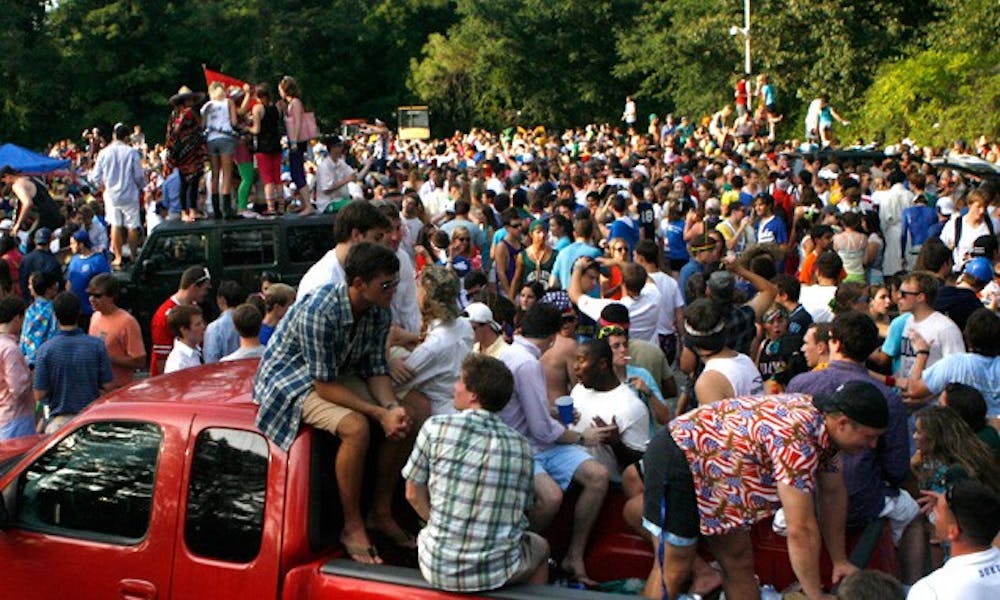Update 4 p.m. Friday. Students attending Tailgate should remember that state law limits the transportation of beer to 80 liters—or nine cases and nine 12-ounce cans, DUPD Chief John Dailey wrote in an e-mail.
Officials will be on student groups’ cases at Tailgate Saturday—30 cases, each.
Official guidelines for Tailgate were released Monday in an e-mail to the student body. The year’s first Tailgate begins at 3:15 p.m. Saturday, almost four hours before Duke faces Elon at 7 p.m. in Wallace Wade Stadium. Although there are a number of new regulations, the most noticeable one is the latest restriction on the amount of alcohol students can bring into the Blue Zone.
There is now a 30 case limit per vehicle—or 720 beers—and a six-can limit per person entering the Blue Zone individually, the e-mail noted. Both limits apply to students of appropriate drinking age who must present proper identification.
Sophomore Chris Brown, vice president of athletics and campus services for Duke Student Government, called the new guidelines a major collaborative effort between student groups and Vice President for Student Affairs Larry Moneta.
The discussions aimed to “promote Duke Football and ensure student safety, which are two equivalent goals,” Moneta said. New rules seek to control the distribution of beer—the most challenging part of Tailgate, he added, because it is easy for students to abuse cans, for example, by throwing them.
Moneta said one potentially successful way of preventing problems is to reduce the amount of alcohol allowed into the event. Similar restrictions on the Last Day of Classes this April were successful, Moneta said.
“Tailgate is a priority because it is one of the few social events open to everyone on campus, so [student leaders] fight really hard to protect it,” said DSG President Mike Lefevre, a senior. “Our biggest fear is that people will not show up and go somewhere else to tailgate. But I do think that enough people will come, and this limits how much beer they waste.”
The alcohol restrictions are not the only new regulations at the event. Each registered group must have two student representatives who enforce policies among their members, such as the rule against not standing or sitting on cars. These members must wear a special neon orange t-shirt with a football logo and signs of alcohol poisoning on the on it. All T-shirts were designed and donated by Duke Stores, Brown said.
Additionally, there is now a Tailgate Team, comparable to party monitors, responsible for enforcing safety guidelines in specific zones. All of the new rules, but this one in particular, promote the “goal to bring Tailgate into students’ hands and allow it to be a student run and operated event that can run as smoothly as possible while avoiding sanctions,” Brown said.
Lefevre said he was pleased with the outcome, which he believes is agreeable to both students and the administration. Both DSG representatives said Tailgate rules are subject to change based on student behavior and how effective they are in achieving goals of safety and promoting school spirit.
Duke Football has seven home games this year, with the regular season ending Nov. 27 against rival North Carolina.
Get The Chronicle straight to your inbox
Signup for our weekly newsletter. Cancel at any time.

